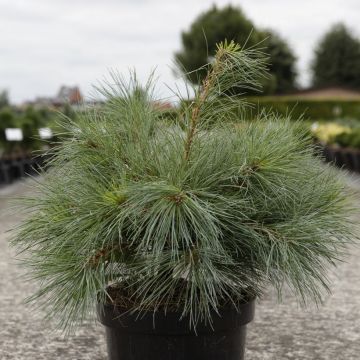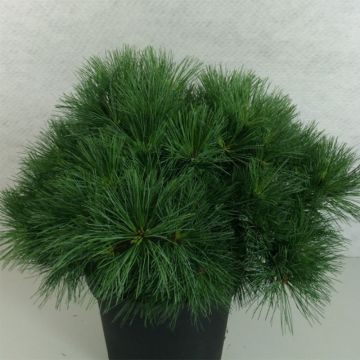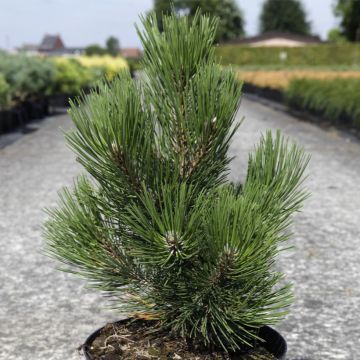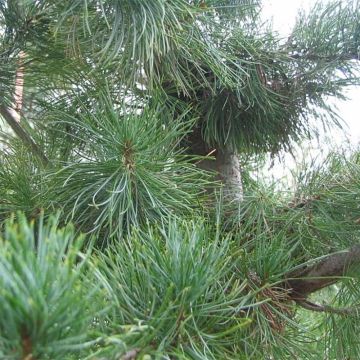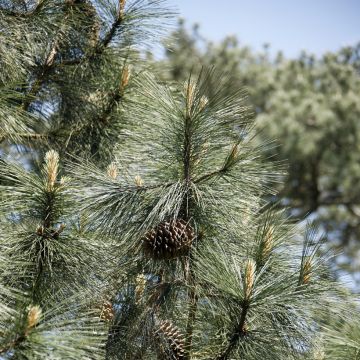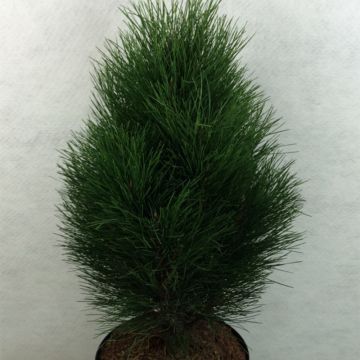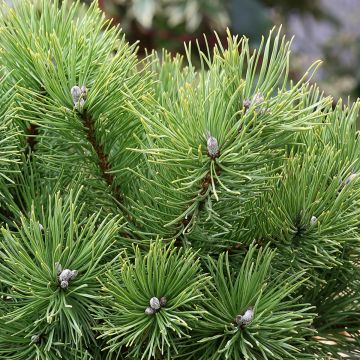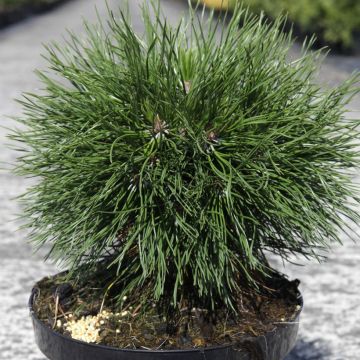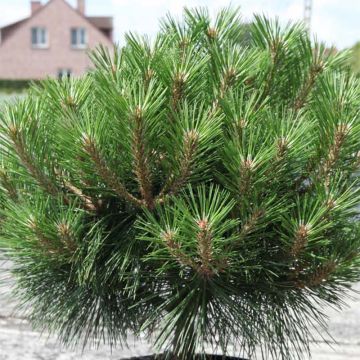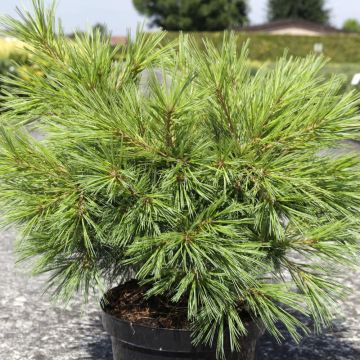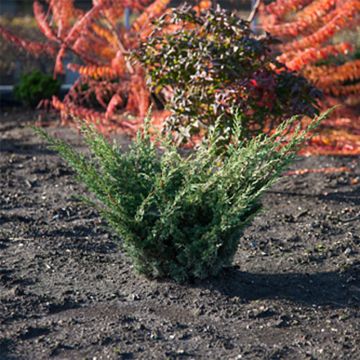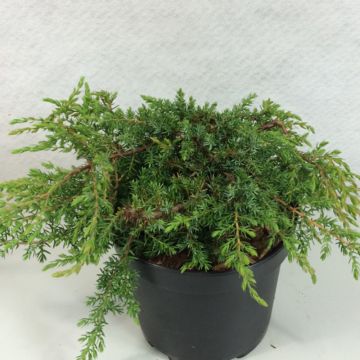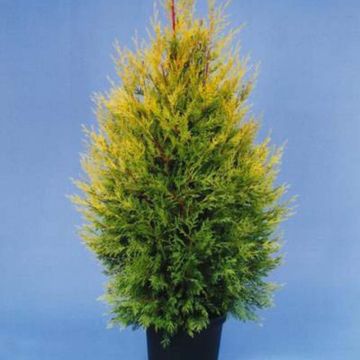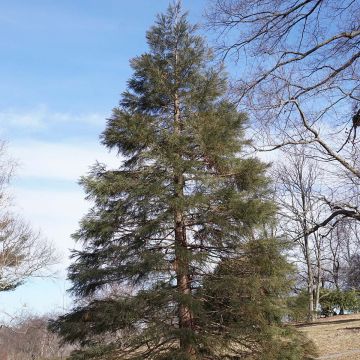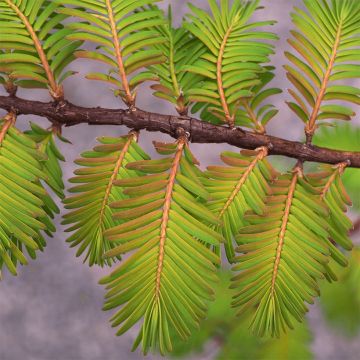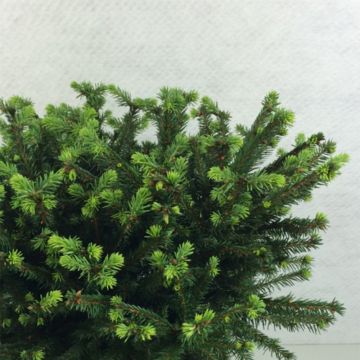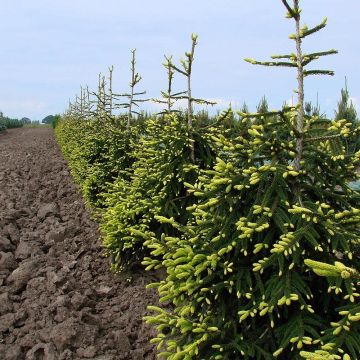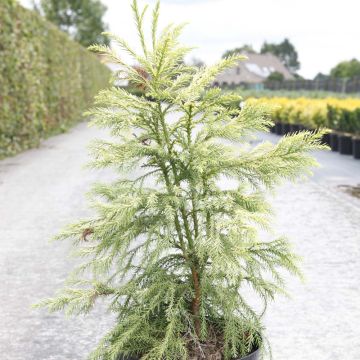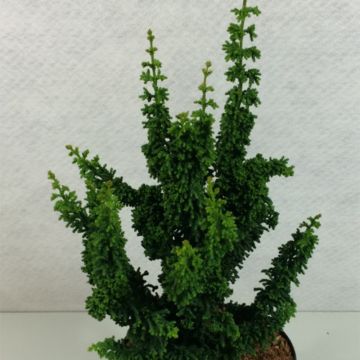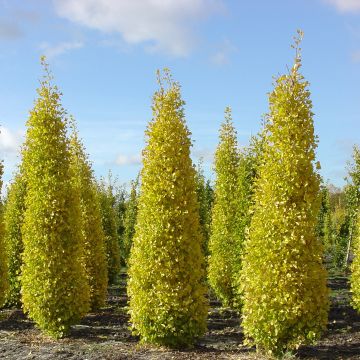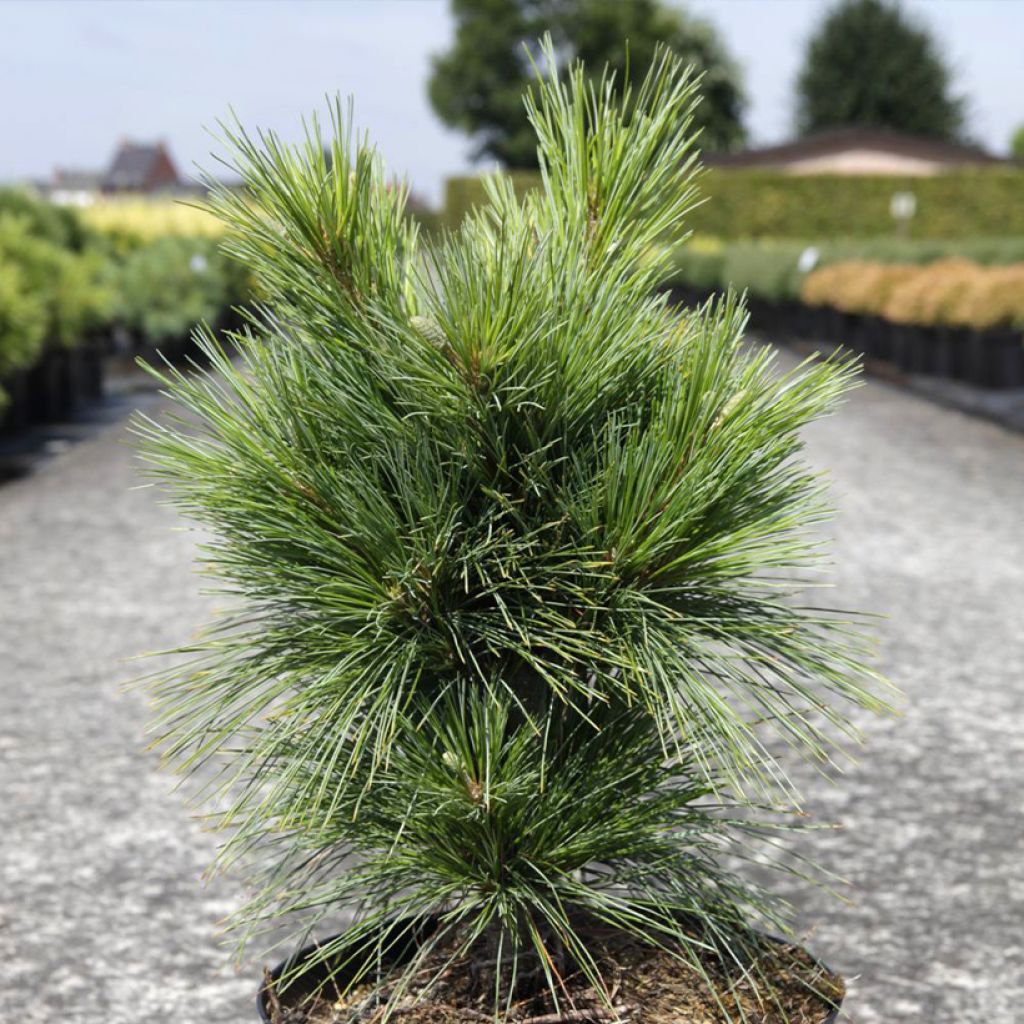

Pinus schwerinii Wiethorst
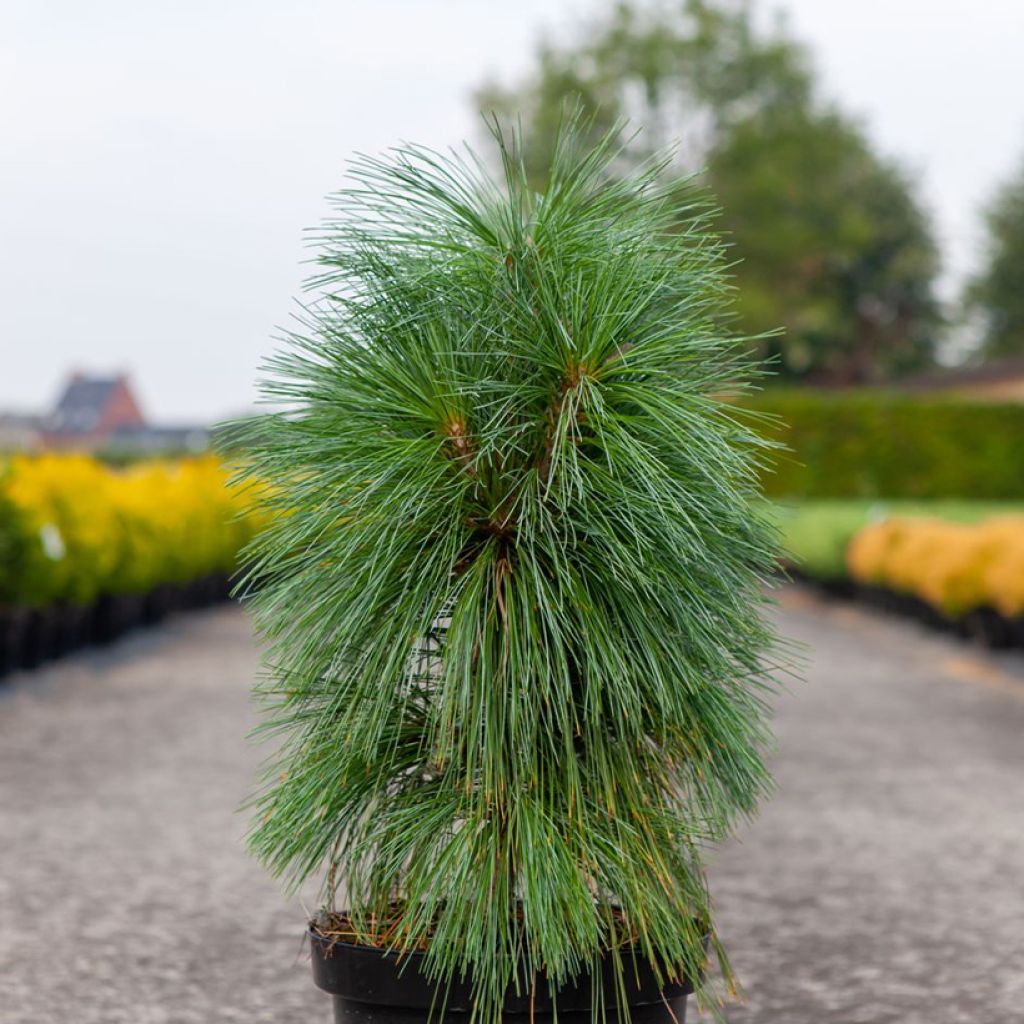

Pinus schwerinii Wiethorst
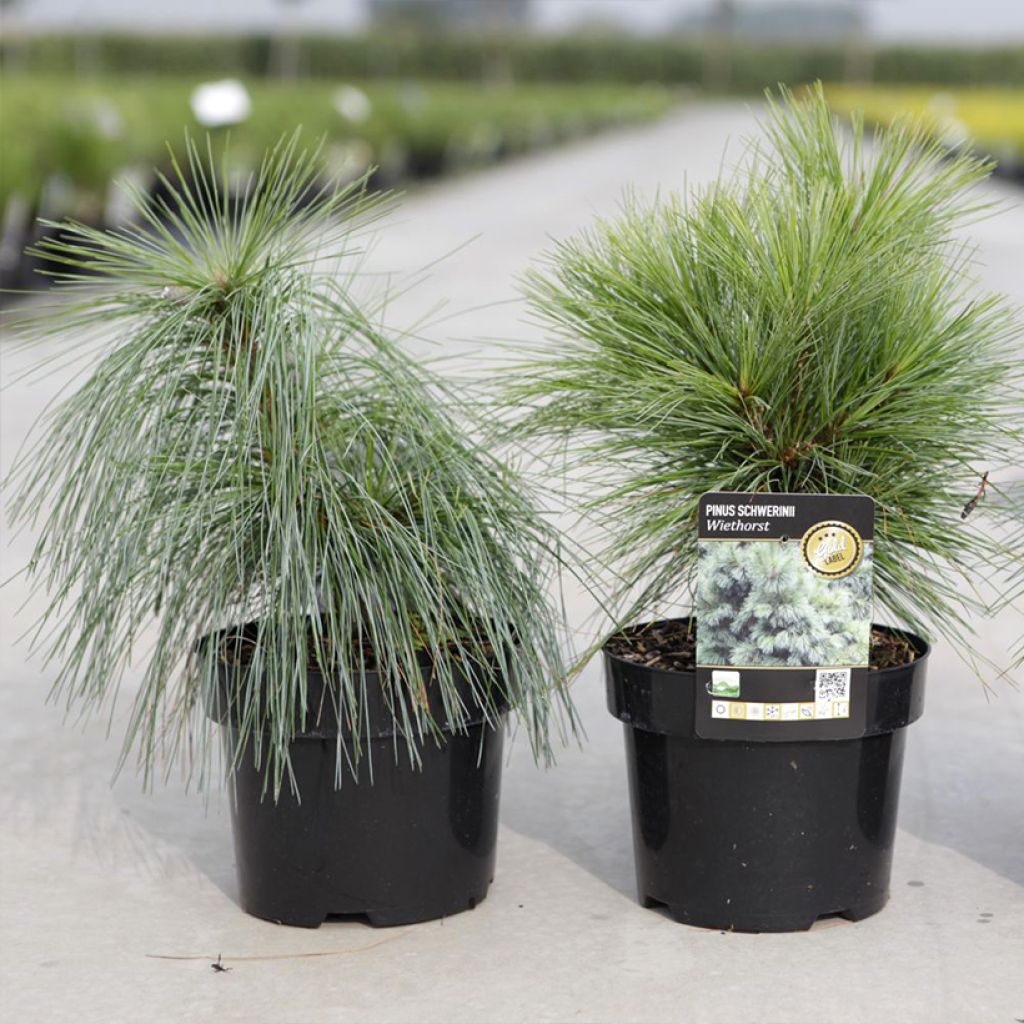

Pinus schwerinii Wiethorst
Pinus schwerinii Wiethorst
Pinus schwerinii Wiethorst
Schwerin's Pine
This item cannot be shipped to the selected country
Delivery charge from €5.90
Delivery charge from €5.90
Delivery to Corse prohibited
More information
Schedule delivery date,
and select date in basket
This plant carries a 24 months recovery warranty
More information
We guarantee the quality of our plants for a full growing cycle, and will replace at our expense any plant that fails to recover under normal climatic and planting conditions.
From €5.90 for pickup delivery and €6.90 for home delivery
Express home delivery from €8.90.
From €5.90 for pickup delivery and €6.90 for home delivery
Express home delivery from €8.90.
Delivery to Corse prohibited: UE law prohibits the import of this plant from mainland France to Corse as part of the fight against Xylella fastidiosa. Please accept our sincere apologies.
More information
Does this plant fit my garden?
Set up your Plantfit profile →
Description
The Pinus schwerinii Wiethorst is a lovely dwarf form of a hybrid between the Himalayan Pine and the Weymouth Pine. This conifer slowly forms a fairly wide, compact pyramid, covered in dense and almost velvety bright green-blue foliage, slightly tinged with grey, made up of long pendulous needles. Its growth is adorned with very long cones, often clustered in bunches, even on young plants. It can be planted as a standalone specimen in a large rock garden or in the center of a flower bed.
The Pinus (x) schwerinii is a spontaneous interspecific hybrid, discovered near Berlin in Germany. It is the result of cross-breeding between the weeping Himalayan Pine (Pinus wallichiana) (from the Himalayas, Afghanistan, and Bhutan) and the giant and cool-loving Eastern White Pine (Pinus strobus) (from the eastern part of North America). It is an evergreen conifer of the pine family that combines the unusual and majestic habit of its first parent with the hardiness of the second.
The Wiethorst form of Pinus schwerinii, with very slow growth, does not exceed 3m (9 ft 10 in) in height and 2.50m (8 ft 2 in) in width at maturity, around the age of 20, without pruning. It stands out with its curious and picturesque habit, in the shape of a pyramid, supported by branches that grow somewhat irregularly if not pruned. Its foliage is surprising, dense, and magnificent, composed of fine, pendulous needles measuring 8cm (3.1 in) long. Their colour is a mix of green and blue, with silver-blue reflections. They are grouped in fives, forming dense tufts that create 'skirts' all along the branches. The numerous thin and cylindrical cones, of a beautiful light green colour, appear at the ends of the branches, even on young plants. Measuring up to 20cm (7.9 in) long, they seem somewhat disproportionate in relation to the size of the pine.
The Wiethorst pine is a picturesque and endearing small tree, deserving of a prominent spot, when planted as a standalone specimen in a small garden. This very hardy conifer adapts to any type of soil, well-drained but moist, in an open and sunny location. Since it appreciates coolness and goes well with large stones or geometric lines, it can be planted near a water feature or along a stream. It can be associated with low-growing conifers with a prostrate habit (Juniperus squamata), globose habit (Picea abies Little Gem), or columnar habit (Juniperus communis 'Sentinel'). The graphic qualities of conifers naturally impose themselves in the design of a contemporary garden, which prefers the aesthetics of forms, silhouettes, and textures over the dance of flowers. These living plants, with their reassuring permanence, structurally define a flower bed for a long time, mark pathways, and line the terrace. The key is to play with volumes and colours.
Report an error about the product description
Pinus schwerinii Wiethorst in pictures
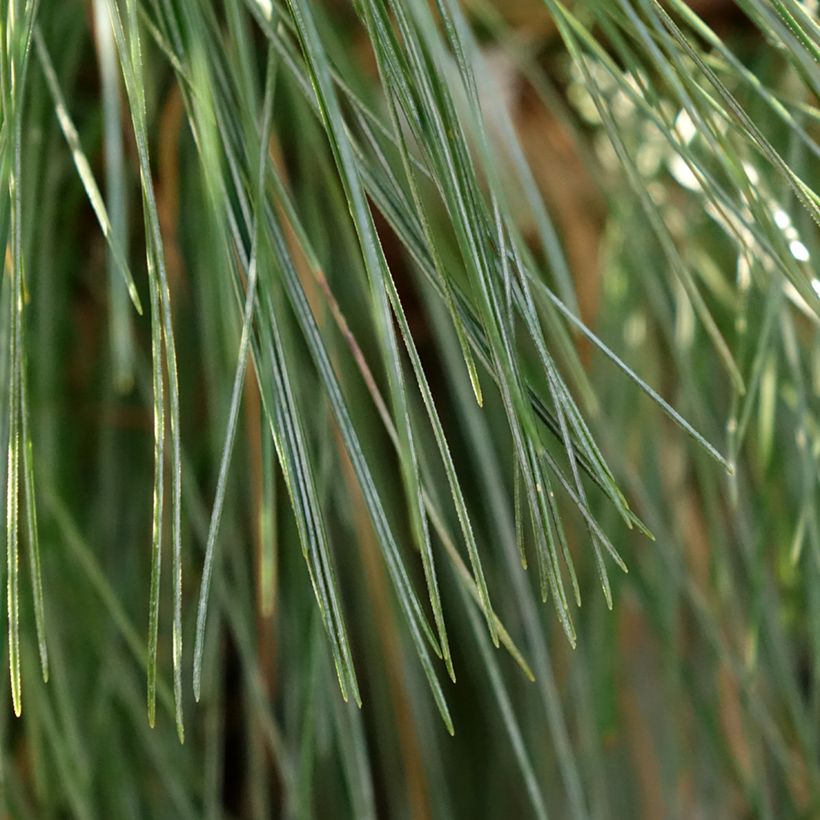

Plant habit
Flowering
Foliage
Botanical data
Pinus
schwerinii
Wiethorst
Pinaceae
Schwerin's Pine
Cultivar or hybrid
Other Pinus - Pine
Planting and care
The Pinus schwerinii Wiethorst can be planted from September to November and from February to June in ordinary soil, even poor, even clayey or slightly chalky, but well-drained and retaining freshness. Choose a sunny location. Soak the root balls well before planting. Add organic amendment at planting and water generously in the first years and in case of prolonged drought. Apply a special conifer fertilizer every year in April and cultivate the soil in summer. This very hardy conifer (up to -25°C (-13 °F) at least) is not afraid of wind, but it fears too dry soils in summer and heatwaves. Pruning is not obligatory, but it allows to maintain a well-regulated habit.
Planting period
Intended location
Care
This item has not been reviewed yet - be the first to leave a review about it.
Conifers
Haven't found what you were looking for?
Hardiness is the lowest winter temperature a plant can endure without suffering serious damage or even dying. However, hardiness is affected by location (a sheltered area, such as a patio), protection (winter cover) and soil type (hardiness is improved by well-drained soil).

Photo Sharing Terms & Conditions
In order to encourage gardeners to interact and share their experiences, Promesse de fleurs offers various media enabling content to be uploaded onto its Site - in particular via the ‘Photo sharing’ module.
The User agrees to refrain from:
- Posting any content that is illegal, prejudicial, insulting, racist, inciteful to hatred, revisionist, contrary to public decency, that infringes on privacy or on the privacy rights of third parties, in particular the publicity rights of persons and goods, intellectual property rights, or the right to privacy.
- Submitting content on behalf of a third party;
- Impersonate the identity of a third party and/or publish any personal information about a third party;
In general, the User undertakes to refrain from any unethical behaviour.
All Content (in particular text, comments, files, images, photos, videos, creative works, etc.), which may be subject to property or intellectual property rights, image or other private rights, shall remain the property of the User, subject to the limited rights granted by the terms of the licence granted by Promesse de fleurs as stated below. Users are at liberty to publish or not to publish such Content on the Site, notably via the ‘Photo Sharing’ facility, and accept that this Content shall be made public and freely accessible, notably on the Internet.
Users further acknowledge, undertake to have ,and guarantee that they hold all necessary rights and permissions to publish such material on the Site, in particular with regard to the legislation in force pertaining to any privacy, property, intellectual property, image, or contractual rights, or rights of any other nature. By publishing such Content on the Site, Users acknowledge accepting full liability as publishers of the Content within the meaning of the law, and grant Promesse de fleurs, free of charge, an inclusive, worldwide licence for the said Content for the entire duration of its publication, including all reproduction, representation, up/downloading, displaying, performing, transmission, and storage rights.
Users also grant permission for their name to be linked to the Content and accept that this link may not always be made available.
By engaging in posting material, Users consent to their Content becoming automatically accessible on the Internet, in particular on other sites and/or blogs and/or web pages of the Promesse de fleurs site, including in particular social pages and the Promesse de fleurs catalogue.
Users may secure the removal of entrusted content free of charge by issuing a simple request via our contact form.
The flowering period indicated on our website applies to countries and regions located in USDA zone 8 (France, the United Kingdom, Ireland, the Netherlands, etc.)
It will vary according to where you live:
- In zones 9 to 10 (Italy, Spain, Greece, etc.), flowering will occur about 2 to 4 weeks earlier.
- In zones 6 to 7 (Germany, Poland, Slovenia, and lower mountainous regions), flowering will be delayed by 2 to 3 weeks.
- In zone 5 (Central Europe, Scandinavia), blooming will be delayed by 3 to 5 weeks.
In temperate climates, pruning of spring-flowering shrubs (forsythia, spireas, etc.) should be done just after flowering.
Pruning of summer-flowering shrubs (Indian Lilac, Perovskia, etc.) can be done in winter or spring.
In cold regions as well as with frost-sensitive plants, avoid pruning too early when severe frosts may still occur.
The planting period indicated on our website applies to countries and regions located in USDA zone 8 (France, United Kingdom, Ireland, Netherlands).
It will vary according to where you live:
- In Mediterranean zones (Marseille, Madrid, Milan, etc.), autumn and winter are the best planting periods.
- In continental zones (Strasbourg, Munich, Vienna, etc.), delay planting by 2 to 3 weeks in spring and bring it forward by 2 to 4 weeks in autumn.
- In mountainous regions (the Alps, Pyrenees, Carpathians, etc.), it is best to plant in late spring (May-June) or late summer (August-September).
The harvesting period indicated on our website applies to countries and regions in USDA zone 8 (France, England, Ireland, the Netherlands).
In colder areas (Scandinavia, Poland, Austria...) fruit and vegetable harvests are likely to be delayed by 3-4 weeks.
In warmer areas (Italy, Spain, Greece, etc.), harvesting will probably take place earlier, depending on weather conditions.
The sowing periods indicated on our website apply to countries and regions within USDA Zone 8 (France, UK, Ireland, Netherlands).
In colder areas (Scandinavia, Poland, Austria...), delay any outdoor sowing by 3-4 weeks, or sow under glass.
In warmer climes (Italy, Spain, Greece, etc.), bring outdoor sowing forward by a few weeks.

































